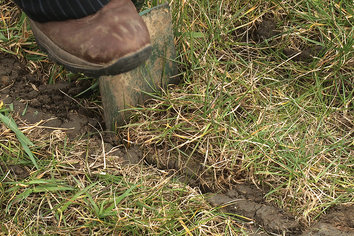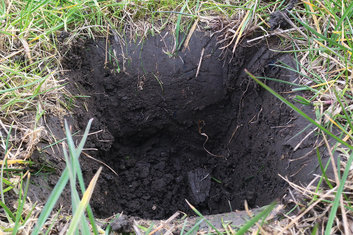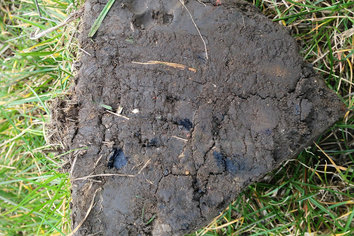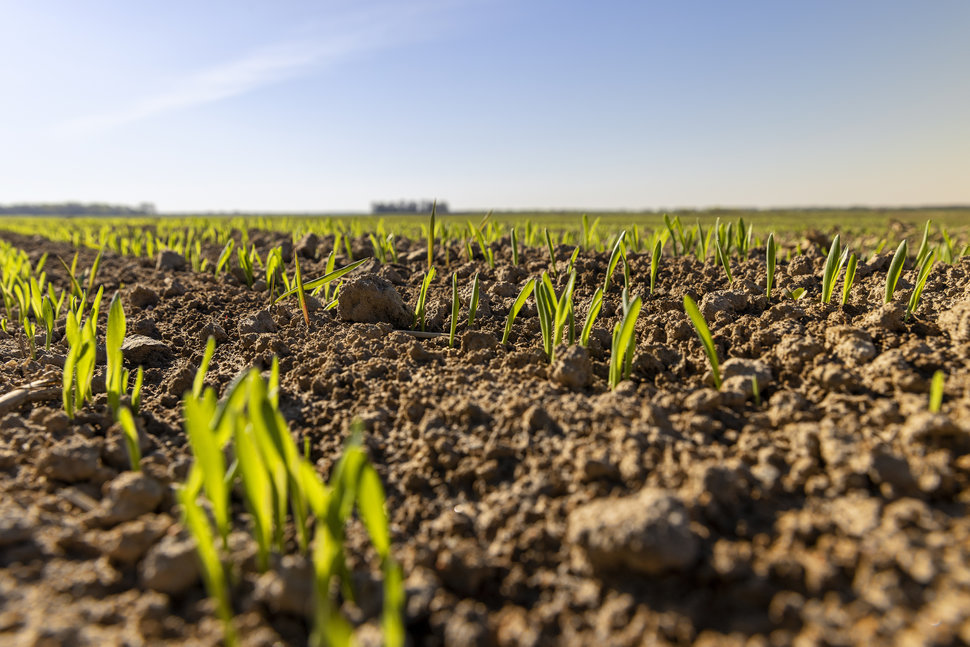Why you should REALLY know your soil
Do you know exactly what lies beneath your feet, in each field of your farm? Autumn, is a good time to think about doing some soil sampling and using the results to prepare management plans accordingly.

Do you know exactly what lies beneath your feet, in each field of your farm? Autumn, is a good time to think about doing some soil sampling and using the results to prepare management plans accordingly.
Janet Montgomery, Barenbrug’s Agriculture Product Manager, spoke to Thomas Vaughan, Environment Manager for the BASIS team, to discuss the value and importance of knowing your soil…
If you think you already know your soil, such that there’s little point in going to all the effort of soil sampling, then this article might not be for you.
But if I told you that, if you’re an English farmer, a good soil management plan will net you £6/ha under the Sustainable Farming Incentive (SFI) – you might concede that a couple more minutes of your time, to read to the end, might be worthwhile.
The other thing to note is that, besides the SFI payments, by implementing a soil management plan you will very likely increase crop yields, improve the sustainability of your business, and increase your farm’s general resilience in the face of climate change.
These points are especially helpful if you’re in an area where you know you’re at risk from run-off or erosion. If you’re farming on light soils, if you cultivate land that’s anything other than pancake-flat, if you farm close to waterbodies, or close to historic features – then you’ve even more reason to read on.
And if I still haven’t persuaded you, then how about this? Under the Farming Rules for Water, you’re obliged to test your soils a minimum of once every five years, recording metrics such as pH, and the levels of key nutrients such as nitrogen, phosphorus, potassium and magnesium.
That’s designed to help you create your nutrient management plan (NMP) – something your FACTS-qualified agronomist will help you with – but since you’re already testing your soil, then why not create a soil management plan (SMP) at the same time?
If your NMP is about what’s contained within the soil – and the rates, timing and frequency of what’s needed to bring nutrients to optimum levels for plant growth – then your soil management plan is about the soil itself: its structure, health and sustainability. The two should go hand-in-hand.

Do the spadework
Once you’ve decided to commit to soil sampling, it’s important to get it right. Autumn, post-harvest, is the best time to do it: soil moisture is good, and the recent crop will have taken out excess nutrients. It’s a good benchmarking point, particularly when repeated at regular intervals.
But put down your spade (for now). Current best practice advice, from AHDB, is to use an auger to collect up to 25 samples per field, from a 30cm depth. Samples should be taken randomly, easily achieved by following the lines of an imaginary giant ‘W’ in the field, while avoiding headlands and gateways. It’s a good idea to log the sample locations, too, so they can be located again for future tests. Use the GPS function on your phone, or the What3Words app.
Aggregate the individual samples from each field and use this as the base from which to send a per-field sample to the lab for testing.
A visual soil assessment (VSA) is an essential part of the sampling process, especially for a soil management plan. There are several ways to do it, but the VESS Method (Visual Evaluation of Soil Structure) is one of the quickest (and here’s where you’ll need your spade):



A useful website to reference is the UK Soil Observatory www.ukso.org/, a database of all soil in the UK. It will tell you the ratio of sand, silt and clay in your fields, as well as the slope of the field. Consider that only 7° is classified as high risk for soil erosion and run-off, and that this is compounded by soil type.

Making use of the results
When the results come back from the lab, soil organic matter is the key metric. Just bear in mind it’s not precise, so can show marked differences between years. The key thing is the trend.
There’s no prescribed format for the soil management plan, but what you should be thinking about in creating it is where the inherent risks lie, and whether any of your current management practices increase those risks.
For example, are you cultivating fields on a slope? Are you growing high-risk crops, such as maize? These should all be accounted for.
But where the testing really comes into its own is in making sense of issues you’ve probably already spotted on the farm. Your visual assessment might confirm the compaction you’ve always suspected, because of surface water, for example. It might also highlight what we could label ‘sub-clinical’ symptoms; problems lurking below the surface that, if left untreated, could soon result in sub-optimal performance above ground, i.e. in your grass or crops.
And then there’s the prioritisation, too: if you’re using your soil test results in conjunction with something like Barenbrug’s grass indexing, then you can further refine your pasture strategy: concentrate on the fields where you can make a difference, rather than those where another limiting factor might lessen your ability to improve things.
Put simply, the soil management plan can help you to understand why some things are ‘as they are’, and show you were to best focus resources for maximum return and effect.
So, your basic SMP should list for each field:
It’s not rocket science. Many farmers, especially those with more ‘soil interaction’, such as arable farmers, will have prepared these. So, if it’s new to you, ask around – perhaps a neighbour has one, or your agronomist will help you.
Don’t go thinking that if most, or all, of your farm is pasture, then you have fewer soil issues. It’s true that you won’t have to account for risks such as bare soils or cultivation depth, but the SMP could nevertheless throw up some interesting results: worm counts, for example, can be affected by inputs.

Update the plan
Treat the SMP as a working document: keep it up to date as things change. This can give you valuable management information to help with decision-making – for example, you might wish to alter a crop rotation if certain risks increase. Equally, a change in cultivation practice, the introduction of cover crops, or the use of undersown grass in a maize crop could all be seen as reducing risk.
Also, don’t be put off by the thought of how many samples you might have to collect! This is a long-term plan, so sample by rotation: aim to cover around 25% of the farm each year.
Over time, all your soil management practices should aim to increase soil organic matter. This will give you increased water retention, less chance of run-off, and a healthier overall soil ecosystem. That in turn will contribute to better crop health – which of course means better grass!